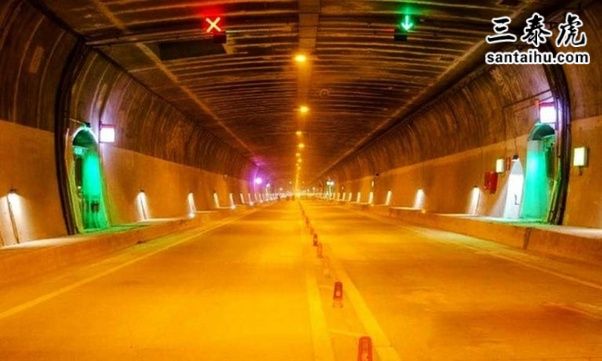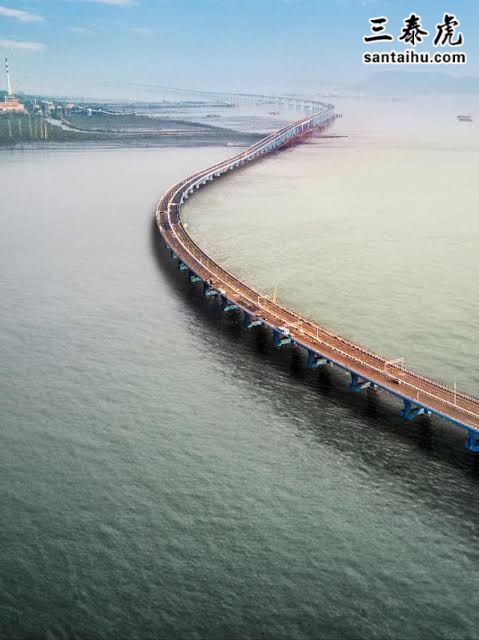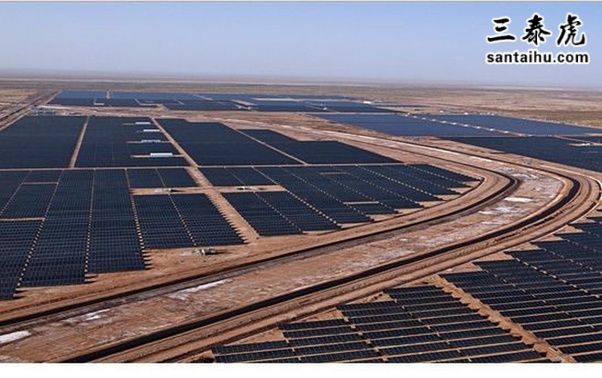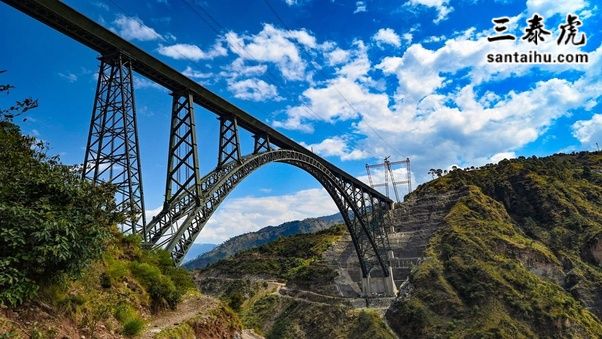Why can't Indian engineers build bridges and skyscrapers just like Chinese engineers do?
为什么印度工程师无法像中国工程师那样造出桥梁和摩天大楼?
以下是Quora网友的评论:
Pavan Tamiri
Indian engineers are far more skilled and experienced than Chinese counter parts
The comparison between Indian and Chinese engineers in terms of building bridges and skyscrapers involves various factors, including economic, political, social, and technological aspects. Here are several key points to consider:
印度工程师比中国工程师技术更高超,经验更丰富。
印度和中国工程师在建造桥梁和摩天大楼方面的能力对比涉及了诸多因素,包括经济、政治、社会和技术等多个方面。以下是需要考虑的几个重要因素:
Economic Factors.
China has experienced rapid economic growth over the past few decades, resulting in significant investments in infrastructure and construction projects. The availability of funds and resources has enabled Chinese engineers to undertake large-scale projects, including bridges and skyscrapers, with substantial budgets and advanced technology.
经济因素。
中国在过去几十年经历了快速的经济增长,在基础设施和工程项目上进行了大量投资。源源不断的资金和资源让中国工程师拥有大量的预算和先进的技术,得以实施包括桥梁和摩天大楼在内的大型项目。
Government Policies and Support.
The chinese has prioritized infrastructure development as a means to stimulate economic growth and improve connectivity within the country. Government policies and support for infrastructure projects play a crucial role in facilitating the planning, funding, and execution of large-scale construction projects.
政府的政策和支持。
中国将基础设施建设作为刺激经济增长和改善国内互联互通的重要手段。中国对基础设施项目的政策和支持在促进大型建设项目的规划、资金和执行方面发挥着至关重要的作用。
Technological Advancements:
Chinese engineers have access to advanced construction technologies and expertise, often leveraging innovative methods and materials in building bridges and skyscrapers. China's investment in research and development has contributed to the adoption of cutting-edge construction techniques and engineering solutions.
科技创新。
中国工程师拥有先进的建筑技术和专业知识,经常利用创新的方法和材料建造桥梁和摩天大楼。中国在研发方面的投资促进了尖端建筑技术和工程解决方案的运用。
Scale and Scope of Projects.
China's vast population and urbanization drive demand for infrastructure projects on a massive scale. As a result, Chinese engineers have gained extensive experience in designing and constructing bridges, highways, railways, and skyscrapers to accommodate the country's rapid urban growth and transportation needs.
工程项目的规模和范围。
中国庞大的人口和城市化推动了国内对基础设施项目的极大需求。因此,中国工程师在设计和建造桥梁、公路、铁路和摩天大楼方面积累了丰富的经验,以适应中国快速的城市增长和交通需求。
Regulatory Environment and Administrative Efficiency.
The regulatory environment and administrative processes can significantly impact the pace and efficiency of construction projects. China's centralized governance structure and streamlined approval processes have facilitated the implementation of large-scale infrastructure projects compared to the sometimes bureaucratic processes in India.
监管环境和行政效率。
监管环境和行政流程可以显著影响建设项目的速度和效率。与印度的官僚习气相比,中国的集中式治理结构和精简的审批程序为大型基础设施项目的实施提供了极大便利。
Investment in Human Capital:
Both countries invest in educating and training engineers, but the scale and focus of these efforts may vary. China has emphasized STEM (Science, Technology, Engineering, and Mathematics) education and vocational training to develop a skilled workforce capable of executing complex construction projects.
对人力资本的投资。
两国都为工程师的教育和培训投入了资源,但这些努力的规模和重点可能各有不同。中国一直十分重视理工学科(科学、技术、工程和数学)的教育和职业培训,培养能够实施复杂建筑项目的熟练劳动力。
Geographical and Environmental Considerations.
India and China have diverse geographical and environmental conditions that influence the design and construction of infrastructure projects. Factors such as seismic activity, soil conditions, and environmental regulations can impact the feasibility and cost-effectiveness of building bridges and skyscrapers in different regions.
地理和环境因素。
印度和中国有着不同的地理和环境条件,影响了基础设施项目的设计和建设。地震活动、土壤条件和环境法规等因素也可能会影响不同地区建造桥梁和摩天大楼的可行性和成本效益。
While Indian engineers have demonstrated competence in designing and constructing infrastructure projects, including bridges and skyscrapers, there may be differences in the scale, scope, and pace of development compared to China. Ultimately, the ability to build bridges and skyscrapers depends on a combination of factors, including economic resources, technological capabilities, government policies, regulatory frameworks, and human capital development.
虽然印度工程师在包括桥梁和摩天大楼在内的基础设施项目的设计和建设方面证明了自己的能力,但与中国相比,印度在基础设施项目的规模、范围和发展速度上可能还是存在差距。归根结底,建造桥梁和摩天大楼的能力取决于各种因素的组合,包括经济资源、技术能力、政府政策、监管法规和劳动力的进步。
On other side the Indian engineers have been involved in a wide range of interesting and innovative projects across various sectors in India over the last ten years. Here are some notable examples:
另一方面,印度工程师在过去十年中参与了各个行业各种有趣、创新的项目。以下是一些值得注意的例子:
1. Chenani-Nashri Tunnel. Located in Jammu and Kashmir, the Chenani-Nashri Tunnel is India's longest road tunnel and one of the most challenging engineering projects in the country. It reduces travel time between Jammu and Srinagar by bypassing difficult terrain and avalanche-prone areas.
1. 切纳尼-纳什里隧道隧道。切纳尼-纳什里隧道隧道位于查谟和克什米尔,是印度最长的公路隧道,也是印度建造难度最大的工程项目之一。该隧道绕过了地形复杂的雪崩多发地区,缩短了查谟和斯利那加之间的通行时间。

2. Atal Setu, Mumbai
The six-lane trans-harbour bridge is 21.8 km long with a 16.5 km sea-link; Atal Setu shows India’s infrastructural prowess and aims to provide a modern and efficient mass transit system for the bustling city of Mumbai. Indian engineers have been instrumental in the design, construction, and operation of the project.
2. 孟买的阿塔尔·塞图大桥
这条六车道的跨海大桥全长21.8公里,在海上延伸16.5公里;阿塔尔·塞图大桥展现了印度在基础设施方面的实力,为交通繁忙的孟买提供了一个现代化、高效的公共交通系统。印度工程师在该项目的设计、建设和运营方面都发挥了重要作用。

3. Gujarat Solar Park: The Gujarat Solar Park is one of the largest solar parks in the world and a flagship renewable energy project in India. Indian engineers have played a crucial role in designing and implementing solar power generation infrastructure, including photovoltaic panels and grid integration systems.
3. 古吉拉特邦太阳能园区:古吉拉特邦太阳能园区是全球最大的太阳能园区之一,也是印度可再生能源的旗帜项目。印度工程师在设计和实施太阳能发电基础设施方面发挥了关键作用,包括光伏板和电网集成系统。

4. The Chenab Bridge is an Indian railway steel and concrete arch bridge between Bakkal and Kauri in the Reasi district of Jammu and Kashmir, India. When completed, the bridge will span the Chenab River at a height of 359 m above the river, making it the world's highest rail bridge.
4. 杰纳布大桥是印度的一座铁路钢筋混凝土拱桥,位于印度查谟和克什米尔雷阿西地区的巴卡尔和卡里之间。建成后,这座桥将跨越杰纳布河,高出河面359米,成为世界上最高的铁路桥。

5. Delhi-Mumbai Industrial Corridor (DMIC): The DMIC project is a massive infrastructure initiative aimed at develo industrial corridors and smart cities along the Delhi-Mumbai freight corridor. Indian engineers have been involved in various aspects of the project, including urban planning, transportation infrastructure, and sustainable development.
5. 德里-孟买工业走廊:该项目是一项大型基础设施,将沿着德里-孟买货运走廊促进工业走廊和智能城市的发展。印度工程师参与了该项目的各个方面,包括城市规划、交通基础设施和可持续发展。

6. Statue of Unity: The Statue of Unity, dedicated to Indian statesman Sardar Vallabhbhai Patel, is the world's tallest statue and a remarkable engineering marvel. Indian engineers were involved in the design, construction, and structural engineering aspects of this iconic monument located in the state of Gujarat.
6. 团结雕像:团结雕像是为了纪念印度政治家萨达尔·瓦拉巴海·帕特尔而建造的,是全球最高的雕像,也是一个了不起的工程奇迹。印度工程师参与了这个位于古吉拉特邦的标志性纪念碑的设计、施工和结构工程等方面的工作。

These projects represent just a few examples of the diverse and impactful initiatives undertaken by Indian engineers in India over the past decade. Their contributions have not only transformed the country's infrastructure landscape but have also facilitated economic development, improved connectivity, and enhanced quality of life for millions of people across India.
上述项目仅仅是近十年内印度工程师创造的较有影响力的几个案例。印度工程师的贡献不仅改变了印度的基础设施格局,还促进了经济的发展,改善了互联互通,提高了印度各地无数民众的生活质量。
Namakkal Raghavendran
All bridges and skyscrapers are not cast in the same mould. Each case is decided upon by umpteen considerations. So comparison with another country is not appropriate.
桥梁和摩天大楼并不是千篇一律的。每项工程都要经过无数的考量才能敲定,所以拿印度跟其他国家进行比较,并不合适。
B Snehith Chowdary
Apparently, we are limited by the budget the government provides us to start with. Another reason is that the rock strata we build the bridges on is not capable of withstanding suspended and highly elevated bridges which limits us to construct minor and major bridges using pile sheeting and retaining walls.
Skyscapers are being built through out India now and then, if you see the condition of Gurgaon there are many medium scaled skyscrapers embracing the sky.
很显然,我们受到了印度政府财政预算的制约。另一个原因在于我们建造桥梁的岩层无法承受悬索桥和高架桥,因此我们只能使用桩板和保持墙来建造小型和大型桥梁。
如今,印度各地都在建造摩天大楼,你去古尔冈看看,当地也有了许多中等高度的摩天大楼。
If we engineers are provided with enough budget with the scope of a suspension bridge and large scale skyscaper, we shall be building the same better than the Chinese.
We are skilled as much as the Chinese, but based upon the government requirement we should hold on until the government tenders these kinds of projects by analysing and examining the soil bearing capacity of our country.
如果印度工程师能获得足够的预算来建造吊桥和摩天大楼,我们肯定会比中国人造得更好。
我们的技术并不比中国人差,但印度政府要求必须先进行土壤承载力的分析和检测后,才能开展项目招标。
Policy Advisory Center
Why doesn't India have the same competitive edge as China does when it comes to building infrastructure?
为什么印度在基础设施建设方面不具备中国那样的竞争优势?
Every citizen of India has a problem with most of the things of our country, be it that of governance, infrastructure, military, education or employment.
Talking about infrastructure of both the countries, let's begin with the most important and basic necessity of a country, when it comes to ease in its development: Medium of transport, primarily, Roads.
每个印度公民对国家的大事小情都有意见,无论是国家治理、基础设施、军事、教育还是就业。
谈到两国的基础设施,我们可以先从一个国家在发展过程中最为重要、也最为基本的必需品谈起:交通途径,主要是道路。
A country can easily be judged on the basis of how swift and easy its media of transportation is. In China, you don't have to worry about your well being while walking in the country, for you don't walk on the main roads out there! Unlike India, there are proper measures taken to keep the public out of the main roads. Unlike India, China has strict rules when it comes to prevention of corrupt means when it comes to construction of roads. This rule is strictly followed and hence no one dares to take corrupt measures in any kinds of constructions.
通过交通工具的速度和便捷程度,可以轻松判断一个国家的国力高低。在中国,你在乡间行走时也不必担心自己的安全,因为你不会走在主干道上!与印度不同的是,中国采取了妥善的措施,让民众远离主干道。与印度不同,中国在道路建设方面制定了严格的规定来杜绝腐败现象。中国严格执行这项法规,所以没有人敢在建筑建造中贪污腐败。
According to records, China spend around 209 billion dollars on the construction and management of roads in its country, and India spend around 15 billion dollars on the same, which is 14 times lesser than China. The production of crude steel and cement in China is more than 9.5 times that in India. Electricity production in China is 5 times more than that in India. Power loss in its transmission is 4 times less than that in India. These are fee powerful factors that make China a stronger economy.
据统计,中国在公路建设和管理方面的支出约为2090亿美元,而印度仅为150亿美元,只有中国的14分之一。中国的生铁和水泥产量是印度的9.5倍以上。中国的发电量是印度的5倍。中国的输电功率损耗比印度低4倍。这些因素都让中国经济变得更加强大。
Efficient planning of roads, various tiered systems in China make the traffic smooth. Whereas in India, the capital of India itself suffers from poorly managed traffic, delay in road constructions and compromise with the quality of material used.
道路规划合理高效,中国的各种分层道路系统让交通更为畅通。相较之下,印度就连首都都面临着交通管理不善、道路建设延误和建设材料质量低下等问题。
The Chinese work under systematic plans. One great example of a milestone in infrastructures can be talked about with respect to the olympic games of 2008, Beiing, and the commonwealth games of 2010, New delhi. It could have been great if, like China, India maintained the efforts that were made back in the 2010, for the commonwealth games. China's olympic stadium, today, is another tourist spot that gives an opportunity and employment to a lot of people in the city. This is not the case with India. All the preparations have gone down the drain. The projects that were supposed to be completed before the commonwealth games, are incomplete till today.
中国人会制订有条理的计划。2008年北京奥运会和2010年新德里英联邦运动会就是很好的例子。如果印度能像中国一样,一直保持2010年为英联邦运动会所做的努力就好了。如今中国的奥林匹克体育场已经成了旅游观光景点,为许多北京市民提供了机会和工作。但印度就没这么幸运了。当年所有的筹备工作都清零了,那些本应在英联邦运动会之前就完工的项目至今仍未完工。
此文由 三泰虎 编辑,未经允许不得转载!:首页 > 印度看中国 » 为什么印度工程师无法像中国工程师那样造出桥梁和摩天大楼
 印媒:中国与印度竞争修建边境基础设施,建村庄和前哨站
印媒:中国与印度竞争修建边境基础设施,建村庄和前哨站 中国在科技、预期寿命、基础设施等各个方面都超越了美国,是否意味着中国成了新的超级大国
中国在科技、预期寿命、基础设施等各个方面都超越了美国,是否意味着中国成了新的超级大国 以人均GDP论,中国才刚刚赶上巴西等国家,中国是如何成功打造出比这些国家发达得多的基础设施的
以人均GDP论,中国才刚刚赶上巴西等国家,中国是如何成功打造出比这些国家发达得多的基础设施的 这个世界已经无法与中国的新基础设施竞争了,印网友热议
这个世界已经无法与中国的新基础设施竞争了,印网友热议 印度陆军参谋长马努基·潘德称,中国正在火速建设边境基础设施
印度陆军参谋长马努基·潘德称,中国正在火速建设边境基础设施 针对中国的“一带一路”计划,四国集团制定了500亿美元的基础设施投资计划
针对中国的“一带一路”计划,四国集团制定了500亿美元的基础设施投资计划